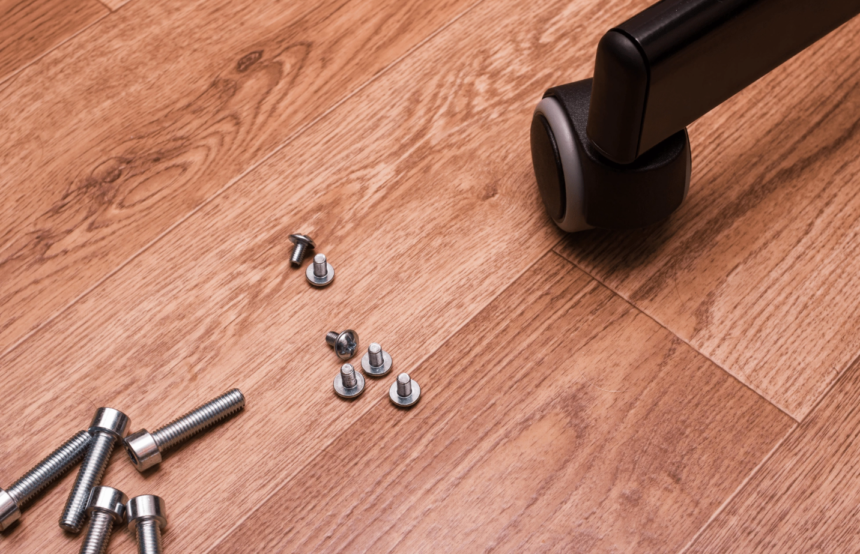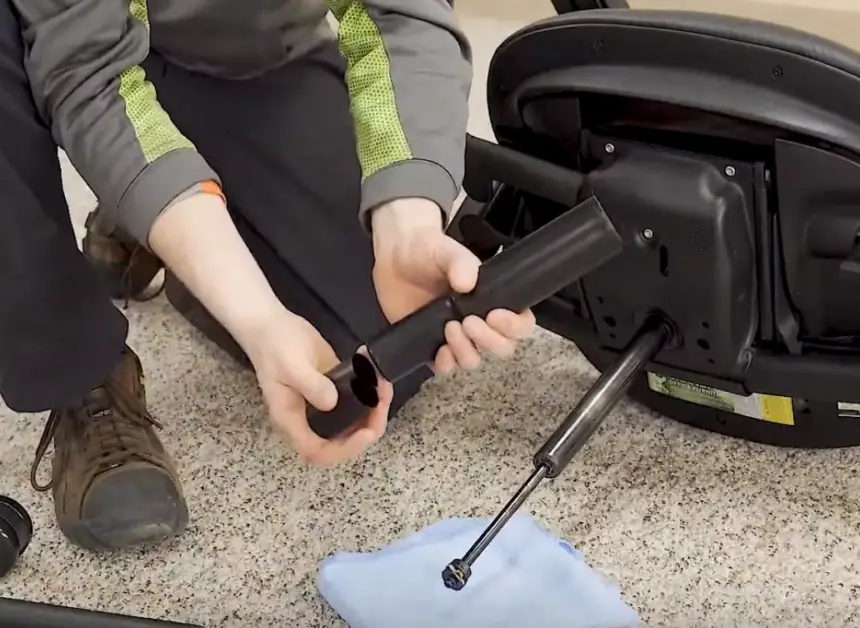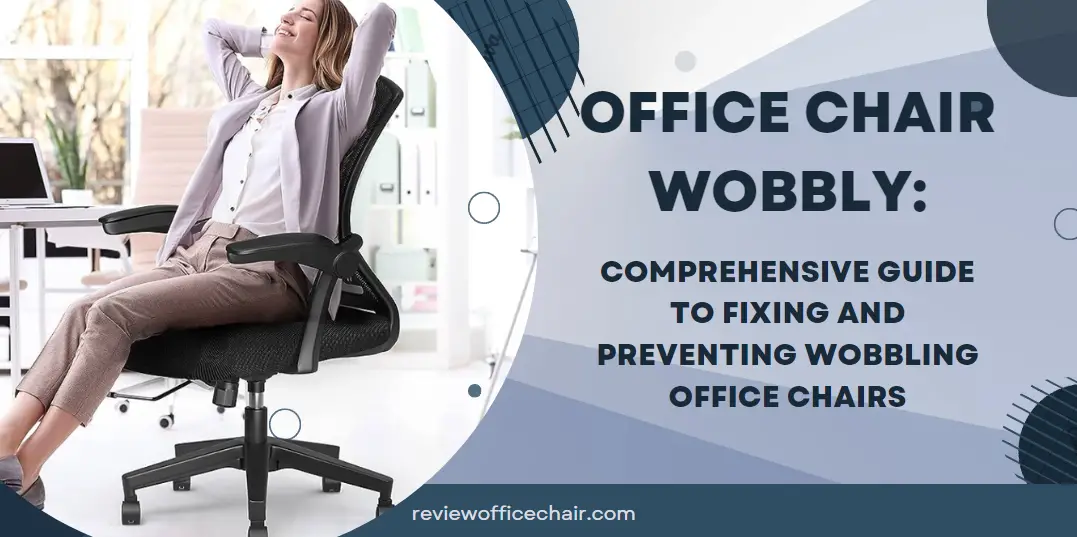Imagine sitting down at your desk, ready to tackle a day’s worth of work, only to find your office chair wobbly and unstable. It’s frustrating, uncomfortable, and can be a major distraction from your productivity.
But fear not, in this in-depth article, we will delve into the world of wobbly office chairs and provide you with practical solutions to fix and prevent this common issue. Whether you are dealing with a minor wobble or a major instability, we’ve got you covered.
Office Chair Wobbly: Understanding the Causes
Before we dive into the solutions, let’s explore the root causes of a wobbly office chair.
A wobbly office chair can be caused by a variety of factors. Here are some common reasons why your office chair might be wobbly:
Loose Bolts and Screws: Office chairs are typically assembled using bolts and screws. Over time, these fasteners can become loose due to regular use. Check the screws and bolts office chair wobbly connecting the various parts of the chair, such as the seat, backrest, and armrests. Tighten any that have become loose.
Worn Out Components: The components of an office chair, such as the base, wheels, and swivel mechanism, can wear out over time. If any of these components are worn or damaged, it can lead to office chair wobbly. Inspect these components for signs of wear or damage and replace them if necessary. Learn how to remove the base of an office chair.
Uneven Floor: If your office chair is on an uneven surface or floor, it can lead to office chair wobbly. Make sure that the chair is placed on a flat and stable surface.
Wheel Issues: Office chair wheels can accumulate debris, hair, and dust over time, affecting their smooth rotation. Clean the wheels and make sure they are securely attached to the base. If the wheels are damaged, consider replacing them.
Gas Cylinder Problems: The gas cylinder is responsible for adjusting the chair’s height. If the gas cylinder is malfunctioning or leaking, it can cause instability in the chair. In such cases, you might need to replace the gas cylinder.
Swivel Mechanism Issues: The swivel mechanism allows the chair to rotate. If this mechanism becomes loose or damaged, it can lead to office chair wobbly. Check the swivel mechanism and tighten any loose parts.
Structural Damage: If the chair has experienced a lot of wear and tear, some of its structural components might be compromised. This can lead to instability and wobbling. Inspect the frame, joints, and other structural elements for any signs of damage.
Assembly Errors: If the chair was not properly assembled initially, it can result in office chair wobbly. Review the assembly instructions and make sure that all components are correctly installed.
Weight Distribution: Sometimes, the way you sit or distribute your weight on the chair can cause it to wobble. Try sitting evenly on the chair and avoiding excessive rocking or leaning.
| Office Chair Wobbly | Understanding the Causes | Simple DIY Fixes |
|---|---|---|
| 1 | Uneven Floor Surfaces | Floor Check and Leveling |
| 2 | Loose Screws and Bolts | Tighten Screws and Bolts |
| 3 | Worn-out Casters | Replace Worn-out Casters |
| 4 | Faulty Gas Cylinder | Check and Replace the Gas Cylinder |
| 5 | Poor Chair Design or Quality | Assess Chair Quality |
Understanding these factors will help you address the issue more effectively.
1. Uneven Floor Surfaces

One of the primary reasons for an office chair wobbly is uneven floor surfaces. The legs of the chair may not have even contact with the ground, leading to instability when you sit on office chair wobbly.
2. Loose Screws and Bolts

Over time, the screws and bolts that hold your office chair together can become loose due to regular use. This can cause the chair to wobble and compromise its stability.
3. Worn-out Casters

The casters, or wheels, of your office chair can wear down with use, leading to an uneven base and wobbling issues.
4. Faulty Gas Cylinder

The gas cylinder is responsible for height adjustment in office chairs. A faulty or damaged gas cylinder can result in wobbling as the chair’s height becomes uneven.
5. Poor Chair Design or Quality

In some cases, a wobbly office chair could be attributed to poor design or low-quality materials used in its construction.
Office Chair Wobbly: Simple DIY Fixes
Now that we have a better understanding of the causes. Let’s take a look at some easy DIY fixes to fix office chair wobbly..
1. Floor Check and Leveling
Inspect the floor surface where your office chair sits. Use a level to identify uneven spots. Place a shim or a small piece of cardboard under the chair leg that is not making proper contact with the floor to level it out.
2. Tighten Screws and Bolts
Carefully examine all the screws and bolts in your office chair. Using the appropriate tools, tighten any loose connections to stabilize the office chair wobbly.
3. Replace Worn-out Casters
If your chair’s casters are worn out or damaged, consider replacing them with new ones. Choose high-quality casters suitable for your floor type to ensure smooth movement and stability.
4. Check and Replace the Gas Cylinder
If the chair’s height is adjustable, check if the gas cylinder is functioning properly. Sometimes, a wobble can be caused by a faulty or worn-out gas cylinder.
To replace the gas cylinder, you might need to disassemble the chair slightly. This can involve removing the base and seat from the cylinder. Refer to your chair’s manual or look for online tutorials specific to your chair model.
Inspect the gas cylinder for any signs of damage or malfunction. If it’s faulty, consider replacing it with a new one to ensure proper height adjustment and stability.
5. Assess Chair Quality
If you suspect that poor design or low-quality materials are causing the office chair wobbly, it might be time to invest in a new, more durable office chair.
Office Chair Wobbly: Preventive Measures
Prevention is always better than a cure. Let’s explore some preventive measures to keep your office chair stable and wobble-free.
1. Regular Maintenance
Perform regular maintenance checks on your office chair. Tighten screws, lubricate moving parts, and inspect for any signs of wear and tear.
2. Weight Limit Awareness
Be mindful of the weight limit specified by the manufacturer for your office chair. Overloading it can lead to premature wear and wobbling.
3. Floor Protection
Consider using chair mats or protective coasters under the chair’s wheels to prevent damage to both the chair and the floor.
4. Invest in Quality
When purchasing a new office chair, opt for one with a reputable brand and positive reviews. Investing in a high-quality chair will ensure better durability and stability.
5. Regular Cleaning
Keep your office chair clean from dust and debris. Regular cleaning will prevent the accumulation of particles that might affect its stability.
Office Chair Wobbly: FAQs
Here are some frequently asked questions about wobbly office chairs, along with their answers:
Q: My office chair wobbles only when I lean back. What could be the reason?
A: The most likely reason is loose screws or bolts in the backrest. Try tightening them, and the wobbling should reduce or disappear.
Q: Can I fix a wobbly office chair myself, or should I seek professional help?
A: Simple fixes like tightening screws or replacing casters can often be done DIY. However, if you’re uncertain or the issue persists, it’s best to consult a professional.
Q: How can I determine if the gas cylinder is faulty?
A: If your office chair sinks or doesn’t stay at the desired height, the gas cylinder might be faulty and needs replacement.
Q: Is it possible to fix a chair with a broken base?
A: Fixing a broken base can be challenging, and it’s often more cost-effective to replace the chair entirely.
Q: Are there any temporary solutions to stabilize a wobbly chair until I can fix it permanently?
A: Yes, you can use a rubber doorstop or some folded cardboard as a temporary solution until you can perform a more permanent fix.
Q: What should I do if my office chair continues to wobble even after trying various fixes?
A: If the wobbling persists despite your efforts, it’s time to consider replacing the chair with a new one.
See more:
- 5 Tips on How To Make An Office Chair Higher?
- How to fix an office chair that won’t stay up
- HOW TO STOP OFFICE CHAIR FROM ROLLING
- How To Remove The Base Of An Office Chair? 4 methods step by step
Conclusion
To address the wobbling issue, start by identifying the specific cause based on the above factors. Once you’ve identified the cause, you can take appropriate actions such as tightening screws, replacing worn components, cleaning the wheels, or making adjustments to the chair’s height and positioning.
If the issue persists or if you’re unsure how to fix it, consider seeking professional help or replacing the chair if it’s beyond repair.
A wobbly office chair can be a nuisance, but with the right knowledge and solutions, you can easily tackle the issue. We hope this comprehensive guide has empowered you with the tools to fix and prevent office chair wobbles. Remember to regularly check and maintain your chair for long-lasting stability and comfort.







